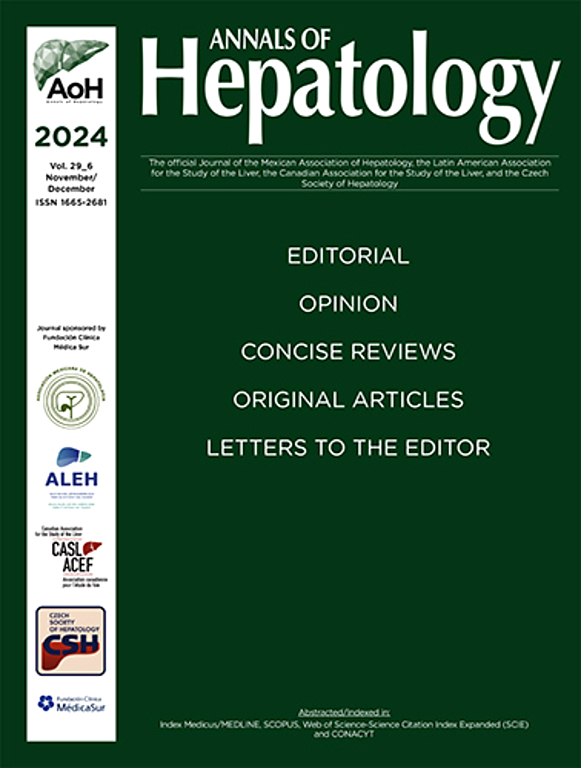P-74 GLYCOSYLATED HEMOGLOBIN LEVELS AS A PREDICTOR OF HEPATIC FIBROSIS DUE TO MASLD
IF 3.7
3区 医学
Q2 GASTROENTEROLOGY & HEPATOLOGY
引用次数: 0
Abstract
Conflict of interest
No
Introduction and Objectives
Hepatic steatosis associated with metabolic dysfunction (MASLD) has a prevalence of 30% worldwide, and 80% of these patients do not present alterations in liver biochemistry. One of the cardiometabolic criteria is having glycosylated hemoglobin ≥5.6%, so an analysis was carried out using the ADA criteria for the diagnosis of prediabetes with HbA1C levels 5.7% - 6.4% and the degree of liver fibrosis.
Objectives
Compare the values of glycosylated hemoglobin and fibrosis determined by Transient Elastography.
Patients / Materials and Methods
Patients with MASLD criteria were included who underwent Transient Liver Elastography (Fibroscan ® 630 Expert v10720), APRI, FIB4, NAFLD score, blood count, liver biochemistry, lipid profile, glucose, glycosylated hemoglobin, clotting times. (TP, INR). It was compared with a control of healthy people. For statistical analysis, SPSS V24 was used for continuous quantitative variables expressed as mean and percentage, with moderate Spearman's Rho correlation.
Results and Discussion
Seventy-five patients with steatosis determined by CAP ≥ 232 were included. The age of the patients was 45 (40, 50).
Patients were classified as healthy (HbA1C <5.7%), prediabetic (HbA1C 5.7%-6.4%), diabetic (HbA1C >6.5%), and patients with a previous diagnosis of diabetes were classified as diabetic controlled (HbA1C <7%). and uncontrolled diabetics (HbA1C >7%), HbA1C levels were 5.7% (5.4%-5.9%). According to the MASLD criteria, 25 patients had HbA1C < 5.6% and 50 with HbA1C > 5.6% or with treatments for T2D.
Sixty-five patiens (86.7%) had no fibrosis, and 10 (13.3%) had fibrosis, with 5.1 kPa (4.3 kPa, 6.5 kPa).
Although no association was found between the degree of steatosis and the degree of fibrosis, the patient with the highest level of fibrosis presented the highest degree of steatosis. X2= 8.916, p=0.178
No association was found between the degree of steatosis and diabetes.
X2= 11.723,p=0.068
However, the degree of diabetes is associated with the presence of fibrosis and the degree of fibrosis, with a weak positive correlation existing between HbA1C levels and CAP levels, Spearman's rho 0.280 p=0.015. Tables 1 and 2
Although no assessment was found between BMI and kPa to determine if there is an association between the degree of fibrosis and the nutritional level, curiously, it can be observed that a healthy patient with grade 3 fibrosis has uncontrolled diabetes. Table 3
Conclusions
Prediabetes may be a predictor of the presence of liver fibrosis associated with MASLD.
求助全文
约1分钟内获得全文
求助全文
来源期刊

Annals of hepatology
医学-胃肠肝病学
CiteScore
7.90
自引率
2.60%
发文量
183
审稿时长
4-8 weeks
期刊介绍:
Annals of Hepatology publishes original research on the biology and diseases of the liver in both humans and experimental models. Contributions may be submitted as regular articles. The journal also publishes concise reviews of both basic and clinical topics.
 求助内容:
求助内容: 应助结果提醒方式:
应助结果提醒方式:


